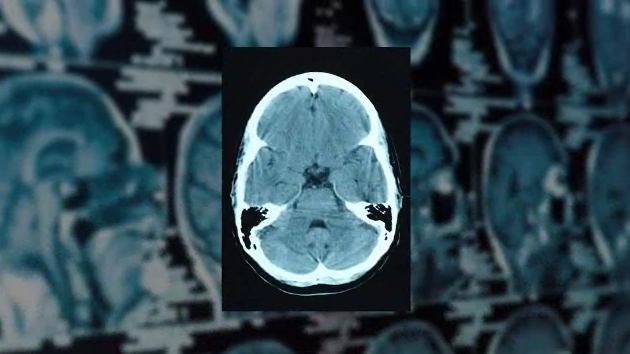
(3-13-18) An article entitled The Perplexing Semantics of Anosognosia: Why an obvious phenomena has sparked controversy, written by Dr. Dinah Miller, co-author of COMMITTED: The Battle Over Involuntary Psychiatric Care, drew strong reactions yesterday after I posted it. Among them was this reply from Dr. E. Fuller Torrey, who has been described by The Washington Post as “perhaps the most famous psychiatrist in America.”
By E. Fuller Torrey, M.D.
Dear Pete,
Dr. Miller questions the appropriateness of using the term “anosognosia” to describe the lack of awareness of illness in individuals with schizophrenia or other psychosis. In The Study of Anosognosia (G.P. Prigatano, ed., Oxford University Press, 2010) anosognosia is defined as “a complete or partial lack of awareness of different neurological…and/or cognitive dysfunctions” which would appear to cover psychoses. She contacted the late Dr. Oliver Sacks who in fact had given an eloquent description of anosognosia in The Man Who Mistook His Wife for a Hat:
“It is not only difficult, it is impossible for patients with certain right-hemisphere syndromes to know their own problems – a peculiar and specific ‘anosognosia,’ as Babinski called it. And it is singularly difficult, for even the most sensitive observer, to picture the inner state; the ‘situation’ of such patients, for this is almost unimaginably remote from anything he himself has ever known.”
Dr. Miller is also incorrect in saying that “we know nothing of the fundamental neural dysfunction” for individuals with anosognosia. Studies of stroke patients have demonstrated that the inferior parietal lobule plays a critical role, especially on the right side. Since 1992, there have been 25 studies comparing the brains of individuals with schizophrenia with and without anosognosia. In all but three studies, significant differences are reported in one or more anatomical structures. Since anosognosia involves a broad brain network concerned with self-awareness, a variety of anatomical structures are involved, especially the anterior insula, anterior cingulate cortex, medial frontal cortex, and inferior parietal cortex. Three of the positive studies included individuals with schizophrenia who had never been treated with medications, discounting the likelihood that the observed brain changes resulted from treatment.
For example, here are descriptions of two recent studies:
In Canada at the University of Toronto, 52 individuals with schizophrenia were assessed for awareness of illness (using the relevant item on the Positive and Negative Syndrome Scale (PANSS)) and underwent MRI. Lack of awareness of illness (anosognosia) was strongly correlated with both severity of illness (p<0.01) and with total white matter volume (p<0.01). Hemispheric asymmetry was evident with the right hemisphere showing less volume than the left hemisphere in patients with impaired awareness of illness, specifically in the anterior end of the inferior temporal lobe (p=0.05); the dorsal lateral prefrontal cortex (p=0.003); and the inferior parietal lobe (angular gyrus) (p=0.05). These findings are consistent with the occurrence of anosognosia in some individuals when stroke occurs in the right hemisphere and suggests that awareness of illness in schizophrenia is likely more associated with to the right hemisphere than to the left.
The authors of the study noted that persons with schizophrenia vary in their degree of anosognosia: “They can have equally bizarre delusions or perceptual disturbances but can be quite dissimilar in their ability to recognize that these experiences arise from their mind rather than a part of objective reality.” This combination of insight with profound mental disturbances is one of the most puzzling aspects of schizophrenia for family members.” Reference: Gerretsen, P., Chakravarty, M.M., Mamo, D., Menon, M., Pollock, B.G., Raiji, T.K., Graff-Guerrero, A. (2013). Frontotemporoparietal asymmetry and lack of illness awareness in schizophrenia. Human Brain Mapping, 34, 1035—1043.
In Canada, researchers at McGill University used magnetic resonance imaging (MRI) to assess 66 individuals with chronic schizophrenia and 33 healthy controls. The Scale to Assess Insight (SAI-E) was used to assess insight into symptoms. Patients with low awareness of symptoms had significantly thinner right insula cortex. The insula is increasingly thought to be a key structure for self-perception. Ref: Emami, S., Guimond, S., Chakravarty, M.M., Lepage, M. (2016). Cortical thickness and low insight into symptoms in enduring schizophrenia. Schizophrenia Research, 170, 66—72.
 Thus anosognosia is clearly biological in origin, in contrast to denial which is psychological in origin.
Thus anosognosia is clearly biological in origin, in contrast to denial which is psychological in origin.
Dr. Miller is correct about one thing—anosognosia is merely a neurological observation and, by itself, has no implications for treatment, involuntary or otherwise. Decisions regarding treatment should be made separately. Thus a woman with Alzheimer’s disease and anosognosia who wants to walk outside in the winter without shoes or socks can be allowed to do so or can be involuntarily prevented from doing so. The fact that she has anosognosia does not, by itself, dictate a course of action. Similarly a woman with paranoid schizophrenia and anosognosia may or may not be treated involuntarily depending on other factors.
Dr. E. Fuller Torrey needs no introduction. He is the author of Surviving Schizophrenia: A Family Manuel, an early leader and supporter of the National Alliance On Mental Illness, and the founder of the Treatment Advocacy Center.



